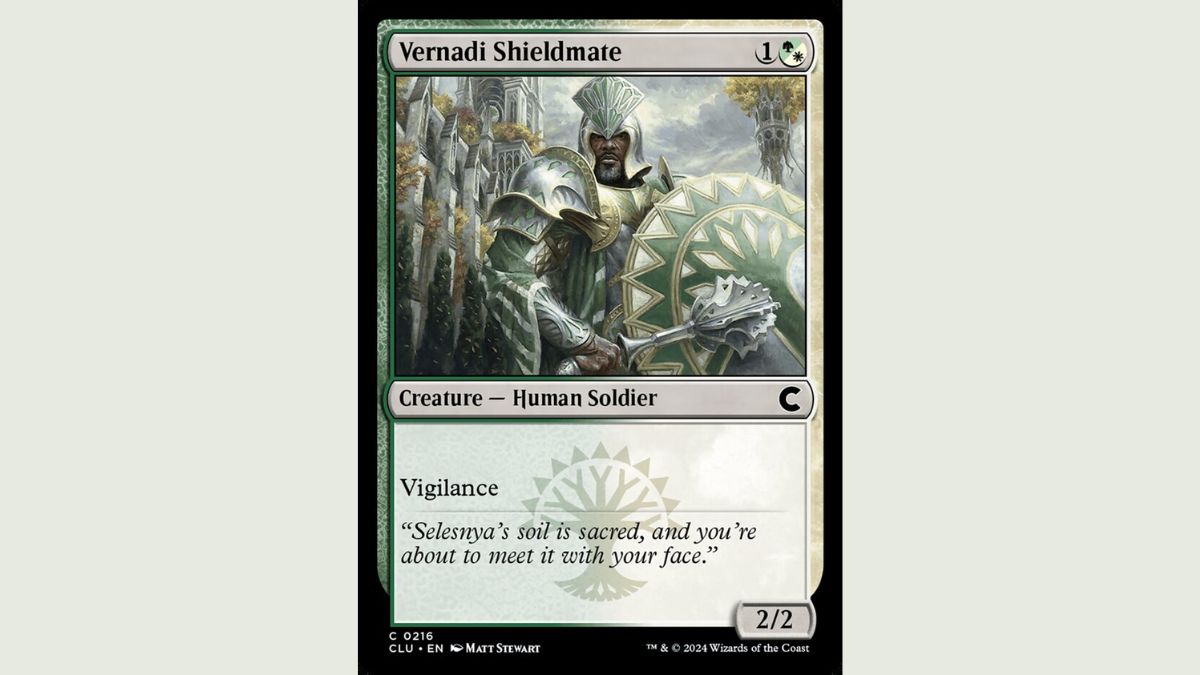There are dozens of mechanics to consider in any Magic: The Gathering game. These have been built upon over more than three decades to include so many that it’s difficult to keep track. Some are applicable in all forms of play, while others are restricted to specific types of games. One that you’ll always need to know how to use and work around is Vigilance. It can be devastating to your board and a powerful asset all at once, but only if you know how to play with it.
What is Vigilance in Magic: the Gathering?

Vigilance is a keyword and ability for cards in Magic: The Gathering that allows them to attack during your turn and defend during your opponent’s. The Vigilance ability means that your card doesn’t tap when attacking. Usually, when you attack during your turn, you turn the attacking card or cards 90 degrees to indicate that they’ve attacked and used their turn, so to speak. This is known as tapping the card.
When your opponent’s turn comes during that round, cards that are turned 90 degrees are considered tapped and so can’t block any incoming damage. However, cards with Vigilance may attack during your turn without being turned, so they aren’t considered tapped. This card can then defend and block damage immediately after dealing it. This is a powerful ability to have, especially when you don’t have many cards on the board that can attack or defend.
How to use Vigilance in Magic: The Gathering

To use Vigilance in Magic: The Gathering, you first need to get to the point where you can play a card with it. This could take several turns, depending on how good your hand was at the start of the match, where your cards lie in the deck, and how many cards you can use to eventually play one with Vigilance.
Once you’ve played a card with Vigilance, as an example, I’ll say you’ve played Lily Bowen, Raging Grandma because she’s my favorite from the Universes Beyond: Fallout set. After sorting out her +1/+1 counters, you can delcare her as an attacker and attack your opponent. It doesn’t matter if you damage or destroy a creature or attack your opponent directly.
Normally, you’d turn Lily Bowen, Raging Grandma, and consider her tapped until the next round. You don’t need to do that, though, because she has Vigilance. This means she doesn’t tap when attacking, so you leave her as she is but still count her attack damage as normal.
When your opponent has their turn and decides to retaliate with an attack, you can now use Lily Bowen, Raging Grandma to block incoming damage. The reason you can do this is that she’s untapped because of that Vigilance keyword. This gives you a major advantage, adding a layer of armor to yourself from any retaliations to your attacks.
To summarize. Most Magic: The Gathering cards can only attack or defend during a round. If you attack, they can’t defend until the next round; the same applies if they block incoming damage. Cards with Vigilance can do both, so it pays to attack during your phase and then use the card to defend if necessary.
How to counter Vigilance in Magic: the Gathering

To counter Vigilance in Magic: The Gathering, you need to anticipate your opponent’s attacks and tap the cards on their board with Vigilance before or after they attack you. For example, if you get to attack first and play a card such as Gustcloak Cavalier, then you can tap a target creature whenever this card attacks. This could be used to tap a card your opponent has that they may use to defend against this attack, meaning that card can’t be used to attack you on their turn.
On the other hand, if your opponent attacks you first and has a card with Vigilance, they could use that card to defend against your attack. To counter this, use Gustcloak Cavalier, or a card with a similar ability, to attack another card and tap the target creature with Vigilance as part of its attack. This means it can’t defend against some of the other cards you have and are attacking with.
It’s quite challenging to counter Vigilance. In fact, it’s easier to play to remove cards altogether, leaving your opponents wide open to direct attacks. However, I think it’s pretty fancy and shows a certain level of skill if you hold cards that allow you to counter Vigilance when required in your deck. Whether that helps you win is another matter. I’ve listed all the cards I know of that can be used to counter Vigilance in this and similar ways below. I’m sure there are more out there because new cards and combos are added with each set.
- Gustcloak Cavalier
- Paralyze
- Diversionary Tactics
- Neko-Te
- White Dragon
- Shipbreaker Kraken
- Thoughtweft Gambit
- Kashi-Tribe Elite
- Silkbind Faerie
- clinging Mists
- Regna’s Sanction
- Claustrophobia
- Twiddle
- Kashi-Tribe Reaver
- Angel’s Trumpet
- Amber Poison
- Jovens’s Ferrets
- Bounding Krasis
- Queen of Ice
- Time of Ice
- Icefall Regent
- Puppet Strings
- Orochi Ranger
- Juvenile Mist Dragon
- Wall of Stolen Identity
- Tolarian Kraken
- Illithid Harvester
- Dovin, Architect of Law
- Matsu-Tribe Decoy
- Matsu-Tribe Birdstalker
- Lorthos, The Tidemaker
- Roots
- Retreat to Coralhelm
- Mind Over Matter
- Timin, Youthful Geist
- Tamiyo, Compleated Sage
- Sanctuary Lockdown
- Icy Blast
- Breaching Leviathan
- Backlash
- Entrancing Lyre
- Niblis of Frost
- Melancholy
- Whip Vine
- Glare of Subdual
- Merchant Raiders
When was Vigilance added to Magic: The Gathering?

Vigilance was added to Magic: The Gathering in 2004 with the Champions of Kamigawa set. At least, that’s when it was codified as a true keyword that you’d regularly begin to see on all your cards. However, the mechanic itself has been in the game since it was initially released.
For example, Serra Angel, a card as old as Magic: The Gathering Alpha, features an ability that reads, “Does not tap when attacking.” Of course, this is the Vigilance ability. It just hadn’t been categorized and used across multiple cards in the same way during this set’s time in the sun.
What color cards have can Vigilance in Magic: The Gathering?

The primary color for cards with Vigilance in Magic: The Gathering is White. However, green cards can also have it, usually as a secondary perk, and there are a handful of blues that also use it. There are a very small number of red and black cards that use Vigilance, but these aren’t common enough that there’s a discernable pattern for their use. I’d say they’re more circumstantial and character/concept-based for those specific cards.
Examples of Magic: The Gathering Cards that have Vigilance

Below, I’ve listed out a few Magic: The Gathering cards that have Vigilance so you can get an idea of what’s out there. They’re from the most recent set, Universes Beyond: Fallout. You could use all or none of these in your deck if you fancy it. I enjoy Vigilance as a mechanic because it can give me a decent amount of protection and offensive power early on, but it’s not everyone’s cup of tea. But that’s okay.
- Marcus, Mutant Mayor
- Desdemona, Freedom’s Edge
- Cass, Hand of Vengeance
- Rampaging Yao Guai
- Lily Bowen, Raging Grandma
- Harold and Bob, First Numens
- Bighorn Ranger
- Mirelurk Queen
- Securitron Squadron
- Pre-War Formalwear
- Paladin Danse, Steel Maverick
- Overseer of Vault 76 (a fantastic nod to one of the best characters in Fallout 76, in my opinion)
- Liberty Prime, Recharged





Published: Mar 17, 2024 01:30 pm